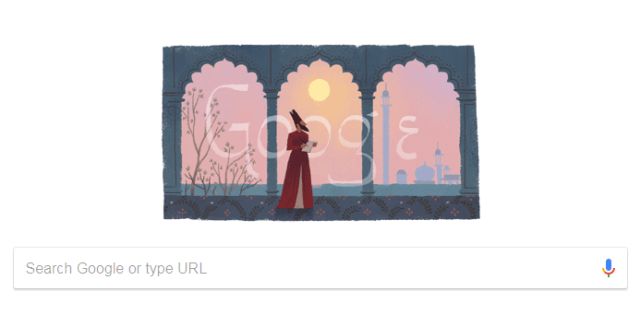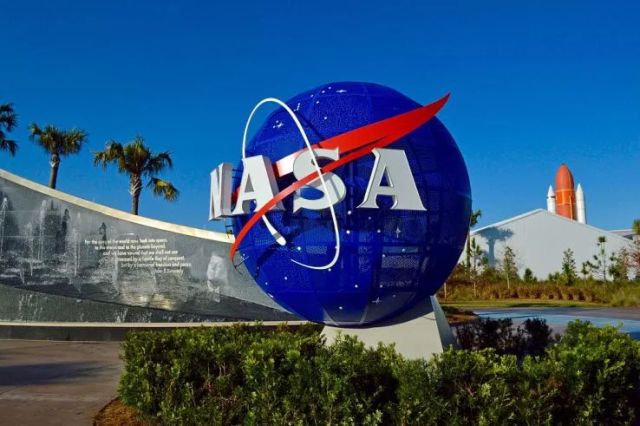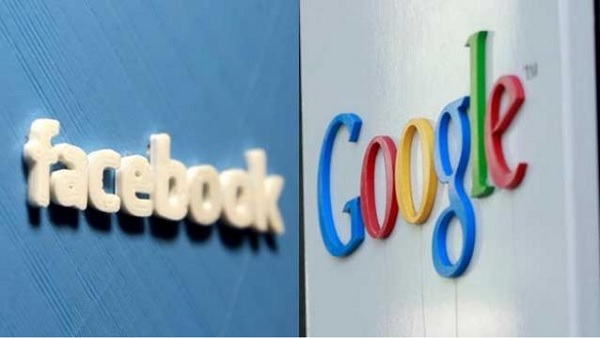
by Editor | May 25, 2021 | Business, Large Enterprise, Markets, SMEs, Technology
 By Nishant Arora,
By Nishant Arora,
New Delhi : Several Indian enterprises have chosen Google Cloud to grow their businesses in the past few years. With the Google Cloud Platform (GCP) region now live in the country, the behemoth is one step closer to helping more local firms embrace Cloud.
The Cloud region in Mumbai — that uses Google’s core infrastructure, data analytics and machine learning — offers several services, including compute, Big Data, storage and networking.
“The launch of the Cloud region opens up new opportunities for several new partners who will benefit from building their services on Google Cloud,” Mohit Pande, Country Manager-India, Google Cloud, told IANS.
Google is bullish on India when it comes to Cloud adoption.
Hike Messenger — the first homegrown messaging platform — has migrated its entire messaging application and network as well as all front-end traffic on to Google Cloud.
Since the migration to Google Cloud, Hike has seen a 25-30 per cent reduction in latency, improving the overall user experience on its platform. Google Cloud is also allowing Hike to scale with efficiency and reduce its go-to-market time and effort.
Big enterprises and emerging businesses like Ashok Leyland, Calcutta Electric Supply Corporation (CESC), Dainik Bhaskar Corp, Reliance Entertainment-Digital, Dalmia Cement, DTDC, Delhivery.com, GoIbibo, Royal Enfield, Air Vistara, Tata Sky and Walnut have chosen Google Cloud as their technology platform.
“The new GCP region will help more customers build applications and store their data, and significantly improve latency for customers and end users in the area,” Pande added.
The Mumbai region joins Singapore, Taiwan, Sydney and Tokyo in the Asia-Pacific, making it easier for customers to build highly available, “performant” applications using resources across those geographies.
The GCP region has three zones. Developers and network admins can distribute apps and storage across multiple zones to protect against service disruptions.
Hosting applications in the new region, said the Google executive, can improve latency from 20 to up to 90 per cent for end users in Chennai, Hyderabad, Bengaluru and Mumbai, compared to hosting them in the other closest region which is Singapore.
With over 50 million SMBs, India is one of the fastest-growing economies in the world. “We have an incredible local team of seasoned enterprise and developer experts connecting with start-ups, SMBs and large corporations to understand their needs and offer solutions accordingly,” Pande told IANS.
According to Manish Verma, Chief Technology Officer at Hungama, they wanted to have a low latency and secure cloud platform to create their active-active, high-availability and load-balanced multi-Cloud set-up.
“Google Cloud Platform gave us a low latency network, better than expected SSL [Secure Sockets Layer] performance, and the ability to optimise costs further with custom machine types,” said Verma.
For Sandeep Kalidindi, Head of Technology at one of India’s largest education networks PaGaLGuy, once the company was exposed to GCP and understood the superiority of the platform, its mindset changed from “let us do everything on our own” to “let us do what we do best” and delegate the rest.
“We are always eager to see what new services are being launched and are extremely excited about what GCP can provide as part of its roadmap,” Kalidindi added.
“We really appreciate the stability and scalability of the GCP platform. As a fast-growing start-up, we can scale our platform up and down in minutes without any worries,” Gaurav Tripathi, Chief Technology Officer and Co-founder at Innoplexus AG, wrote on the GCP Mumbai webpage.
Innoplexus caters to the life sciences industry, offering Data as a Service (DaaS) and Continuous Analytics as Service (CaaS) products.
Google recently announced a partnership with Cisco to help its customers improve agility and security in a hybrid world with a fully-supported, open solution for developing and managing applications on-premises and on Google Cloud.
To meet the growing demand for industry-ready workforce in cloud computing, data analytics and machine learning, Google has also collaborated with Coursera, a leading US-based global online education platform, to launch a series of on-demand GCP training courses.
These courses range in skill levels from beginner to advanced and include topics like cloud fundamentals, operations, security, data analytics and machine learning.
(Nishant Arora can be contacted at nishant.a@ians.in)
—IANS

by Editor | May 25, 2021 | Markets, Technology
 San Francisco : Google has started testing its Fuchsia Operating System (OS) on the $1000 Pixelbook hybrid laptop that was unveiled alongside the second-generation Pixel smartphone and Google Home Mini smart speaker at the company’s 2017 hardware event in California, reports said.
San Francisco : Google has started testing its Fuchsia Operating System (OS) on the $1000 Pixelbook hybrid laptop that was unveiled alongside the second-generation Pixel smartphone and Google Home Mini smart speaker at the company’s 2017 hardware event in California, reports said.
“This isn’t your typical developer operating system, and you’ll need two machines to host and target a Pixelbook to load the OS. It’s interesting that Google has chosen its own Pixelbook to experiment with,” The Verge reported on Wednesday.
“Fuchsia has mostly been linked to embedded systems like wearables and Internet of Things (IoT) devices in the past, but testing was expanded to Intel’s NUC and Acer’s Switch Alpha 12 Chromebooks,” it added.
The Pixelbook installation process for Fuchsia is not easy and the tech giant has reportedly recommended installing the OS with a USB drive.
Fuchsia OS has been open-sourced for the developer community to help build, test and evolve. It is different from the Linux kernels that are also the foundation of Android and Chrome OS.
The operating system, which is being developed, is Google’s third operating system after Chrome OS and Android.
It has been described as targeting “modern phones and modern personal computers” that would put it in competition with both of Google’s existing operating systems, according to tech website Ars Technica.
—IANS

by Editor | May 25, 2021 | News
 New Delhi : Search engine Google on Wednesday celebrated one of Urdu literature’s most iconic poets, Mirza Asadullah Baig Khan, popularly known as Ghalib (meaning conqueror).
New Delhi : Search engine Google on Wednesday celebrated one of Urdu literature’s most iconic poets, Mirza Asadullah Baig Khan, popularly known as Ghalib (meaning conqueror).
Mirza Ghalib, who would have turned 220 this year, is shown standing on a balcony of a building of his era, with a pen and paper, and the sun and a mosque in his background.
Born in 1797, the poet, one of the most popular and influential ones in Urdu and Persian language, wrote at a time when the Mughal empire was entering its last quarter and the British were taking over in India.
His ghazals have been interpreted and sung in many different ways by different people as his writing which is still extremely popular among the Hindustani diaspora.
Ghalib continues to inspire even the youngster not just in India but across the world.
He began composing poetry at the age of 11. His first language was Urdu, but he was equally efficient in Persian and Turkish. A descendent of Aibak Turks, Ghalib was born in Kala Mahal in Agra.
He received education in Persian and Arabic. Keeping with the conventions of the classical ghazal, in most of his verses, the identity and the gender of the beloved remained unknown.
Bestowed with the honorific Dabir-ul-Mulk and Najm-ud-Daula, Ghalib lived in Gali Qasim Jaan, Ballimaran, Chandni Chowk, in Old Delhi which is now known as “Ghalib Ki Haveli”.
His residence has been turned into ‘Ghalib Memorial’ and houses a permanent Ghalib exhibition.
Mirza Ghalib breathed his last on February 15, 1869. His tomb is located near Chausath Khamba, Nizamuddin area in Delhi.
—IANS

by Editor | May 25, 2021 | Markets, Technology
 Washington : The Artificial Intelligence (AI) and Machine Learning (ML) approach from Google researchers helped NASA discover two exoplanets, including an eighth planet around the star Kepler-90.
Washington : The Artificial Intelligence (AI) and Machine Learning (ML) approach from Google researchers helped NASA discover two exoplanets, including an eighth planet around the star Kepler-90.
With an eighth planet circling Kepler-90, our solar system now is tied for most number of planets around a single star, NASA and Google said in a statement late on Thursday.
Kepler-90 is a Sun-like star which is 2,545 light-years from Earth.
The Google AI found exoplanets using data from NASA’s Kepler Space Telescope.
In this case, computers learned to identify planets by finding in Kepler data instances where the telescope recorded signals from planets beyond our solar system, known as exoplanets.
The discovery came after researchers Christopher Shallue and Andrew Vanderburg trained a computer to learn how to identify exoplanets in the light readings recorded by Kepler — the minuscule change in brightness captured when a planet passed in front of, or transited, a star.
Inspired by the way neurons connect in the human brain, this artificial “neural network” sifted through Kepler data and found weak transit signals from a previously-missed eighth planet orbiting Kepler-90, in the constellation Draco.
While machine learning has previously been used in searches of the Kepler database, this research demonstrates that neural networks are a promising tool in finding some of the weakest signals of distant worlds.
Shallue, a senior software engineer with Google AI research team, came up with the idea to apply a neural network to Kepler data.
“In my spare time, I started googling for ‘finding exoplanets with large data sets’ and found out about the Kepler mission and the huge data set available,” said Shallue.
First, the researchers trained the neural network to identify transiting exoplanets using a set of 15,000 previously-vetted signals from the Kepler exoplanet catalogue.
In the test set, the neural network correctly identified true planets and false positives 96 per cent of the time.
Then, with the neural network having “learned” to detect the pattern of a transiting exoplanet, the researchers directed their model to search for weaker signals in 670 star systems that already had multiple known planets.
Their assumption was that multiple-planet systems would be the best places to look for more exoplanets.
“We got lots of false positives of planets, but also potentially more real planets,” said Vanderburg.
“It’s like sifting through rocks to find jewels. If you have a finer sieve then you will catch more rocks but you might catch more jewels, as well.”
Kepler-90i wasn’t the only jewel this neural network sifted out. In the Kepler-80 system, they also found a sixth planet.
This one, the Earth-sized Kepler-80g, and four of its neighbouring planets form what is called a resonant chain – where planets are locked by their mutual gravity in a rhythmic orbital dance.
The result is an extremely stable system, similar to the seven planets in the TRAPPIST-1 system.
—IANS

by Editor | May 25, 2021 | Markets, Networking, Online Marketing, Social Media, Technology
 San Francisco : Google has beaten Facebook to become publishers’ main source of external page views over the course of 2017, a new data showed.
San Francisco : Google has beaten Facebook to become publishers’ main source of external page views over the course of 2017, a new data showed.
Google used to be the main source of referral traffic for web publishers. Then Facebook eclipsed it, ReCode reported late on Monday.
According to digital analytics company Parse.ly, Google sent more traffic than Facebook to publishers — Facebook sent 25 per cent less traffic to publishers in 2017, while Google increased its traffic by 17 per cent.
In January, Facebook provided nearly 40 per cent of publishers’ external traffic which is now down to 26 per cent.
Google, which started the year at 34 per cent, generated 44 per cent of the total traffic.
Parse.ly pointed out a number of factors for this turnaround.
In 2016 Facebook tweaked its algorithm to prioritise posts from friends and family over publishers.
Also, Facebook’s “Instant Articles” feature, where the service hosted some publishers’ content directly but promised to send more readers to the original site as well, has declined in importance, the analytics company found.
Since users can now publish videos directly on Facebook, this might have affected how many links to web stories publishers put on their Facebook pages.
Google’s “accelerated mobile pages” (AMP) feature, which also hosts publishers’ content directly on Google’s servers, became more important over the year.
AMP stories – typically from news publishers – are surfaced at the top of mobile search results as “Top Stories,” which drives clicks.
—IANS




